Hello and welcome to another blog post about building stuff! I like building things and writing about the stuff I’ve built. I’m assuming most readers of this blog enjoy learning about the things I’ve built (at least compared to other topics I write about), so let’s keep this rolling until I hear otherwise!
Cooking has always been a big deal in my family. As part of that, it was instilled in me at a young age just how incredible a home cooked meal could be. To cook a good meal though, GENERALLY requires a decent amount of time/energy. Both things I was rather short on after a day of school or work. This was one of many factors driving me towards early retirement. The way I looked at it, I could either work my desk job and then pay other people to grow/cook my food, OR I could spend my time doing those things. In both scenarios I fulfill my need to eat, but with one of them I don’t have to go and interact with other people. Introverts baby! 😀 In retirement I have had the time to cook most of our meals, but space to grow our own food is in short supply until we move to the homestead. We still have a couple of years until we are living on the homestead, so until then enter the indoor herb garden!
I’ve always wanted to have herb plants growing for all I of my cooking needs. We’ve usually had one random herb plant here and there, but we never really had the space/lighting to grow them for extended periods of time. With the updates I’ve made to our grow setup (I’ll show some pictures later), we now have sufficient space/lighting to handle at least a few herb plants and I can adjust the height of the light. I also recently learned that you can grow a lot of different herb plants in water. News to me but not news to my wife. So this may or may not be news to you 😀 Besides having the benefits of avoiding the potential mess of soil and pests, I think growing plants in water where you can see the roots is just plain cool looking. I’ll still have to start the seeds in soil, but that will be short lived.
The herbs we will be trying out first are: basil, lemongrass, oregano, thyme, parsley, rosemary, and sage. I have a decent amount of mason jars (for eventual canning on the homestead), so I’ll use those as the final containers. The only real question is whether or not I build a frame to keep the jars in place. It would be nice to have individual holders that list the name of the herb. I could build something out of wood or maybe have something 3D printed. Something to think about while I wait for the seeds to sprout.
To start the seeds I use an egg carton. A little seedling mix in each well, two-three seeds in each, enough water to moisten the seedling mix, and finally wrap the whole thing in plastic wrap to generate a “greenhouse” effect. Put this in a warm area and leave it alone for a few days. After a few days, some of the seeds should be starting to break through signaling time to remove the plastic wrap.
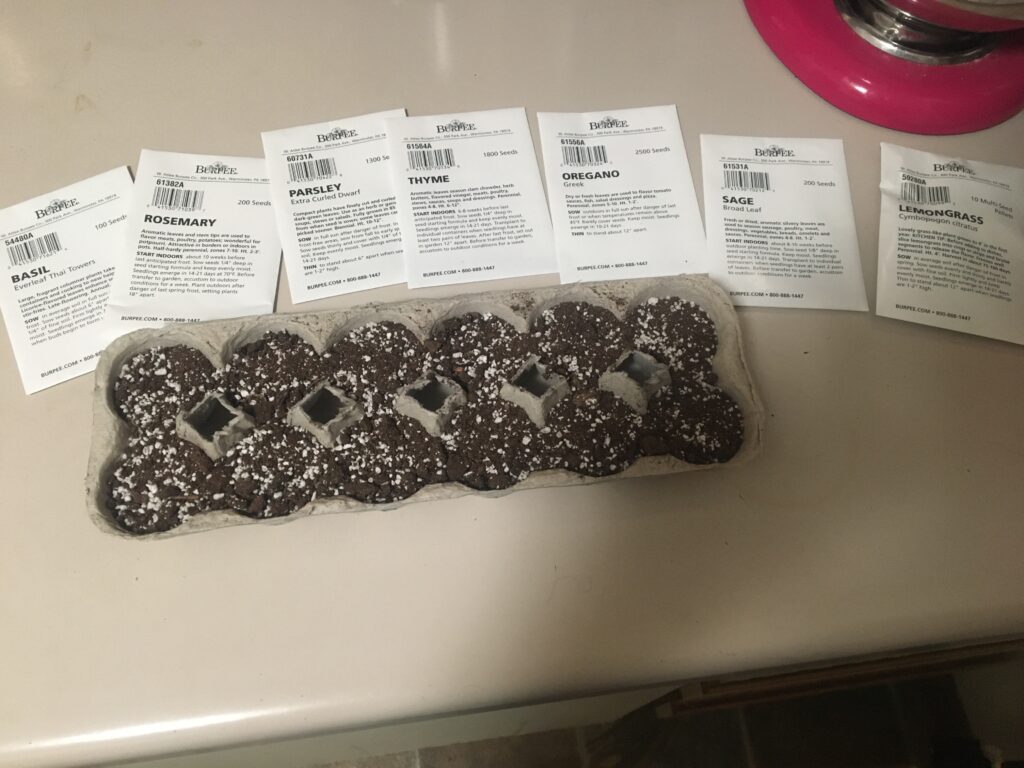
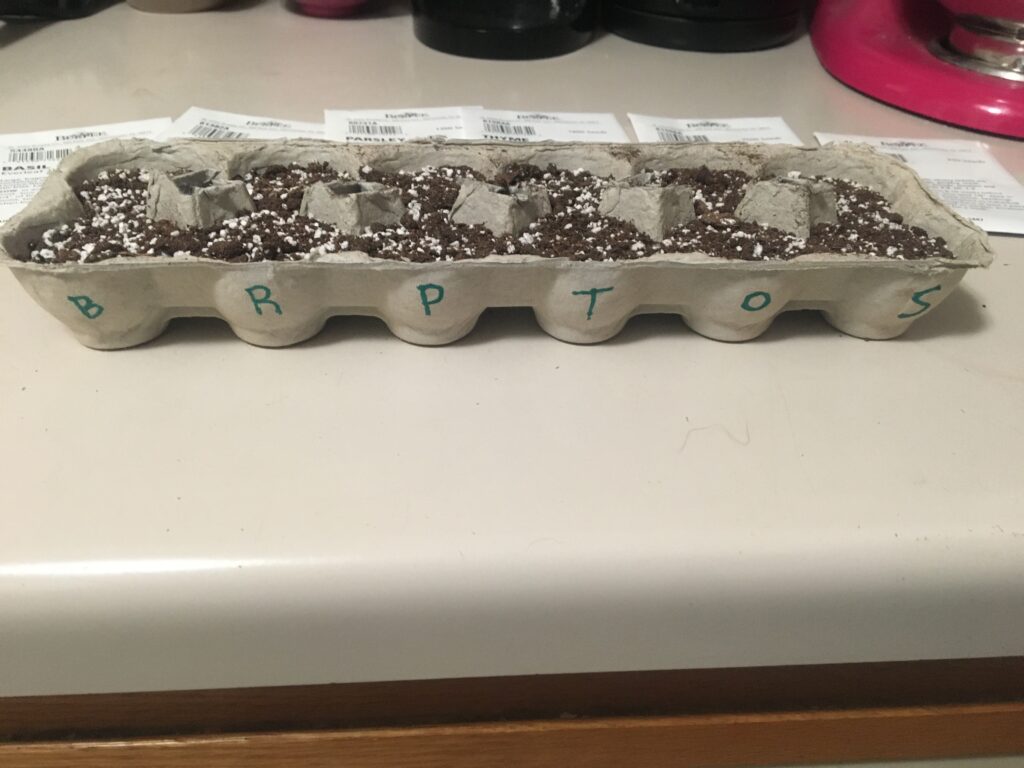
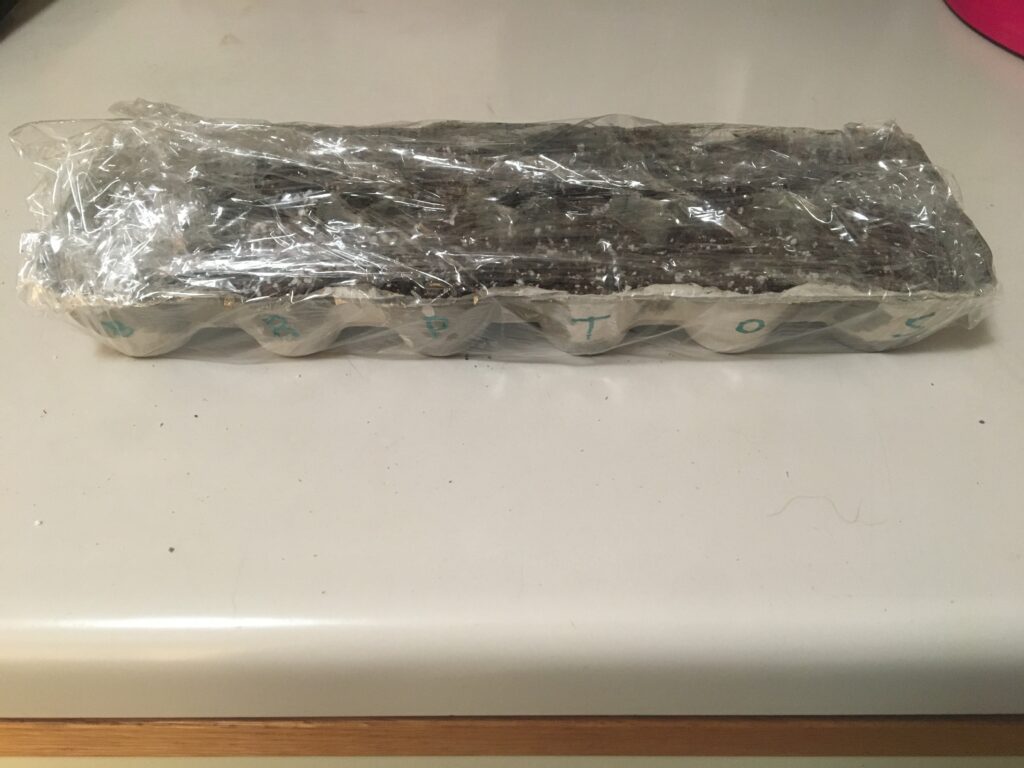
There are twelve wells in the egg carton, but I weirdly bought seven different types of herbs to make things difficult 🙂 Therefore, each well will get one type of herb and the remaining five wells will be the herbs we use most frequently. Those are: basil, oregano, thyme, parsley, and rosemary. If I have trouble growing the lemongrass or sage (or any other ones for that matter) I’ll just try again in the future 🙂
Not all of them started to sprout at the same time, but once the first seed starts to sprout it is time to take the plastic off. Now it is time to get them under the grow lights until all of the seeds sprout. So I got everything to sprout except for the sage. Not a big deal since we don’t use sage for anything currently. Make sure to get the seedlings as close to the light as possible!! 😀
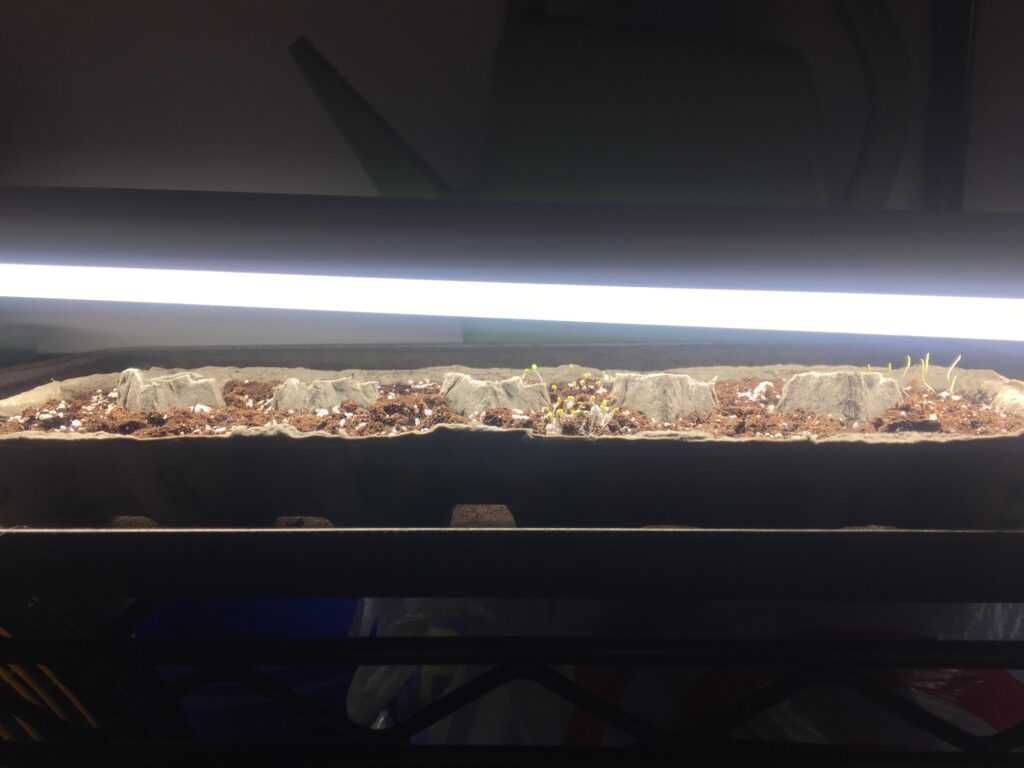
One of the reasons I like starting my seeds in egg cartons is because you can cut apart each well and transfer the whole thing when it is ready for a larger growing container. The egg carton should eventually break down or at least be weak enough that the roots can break through it when the time comes.
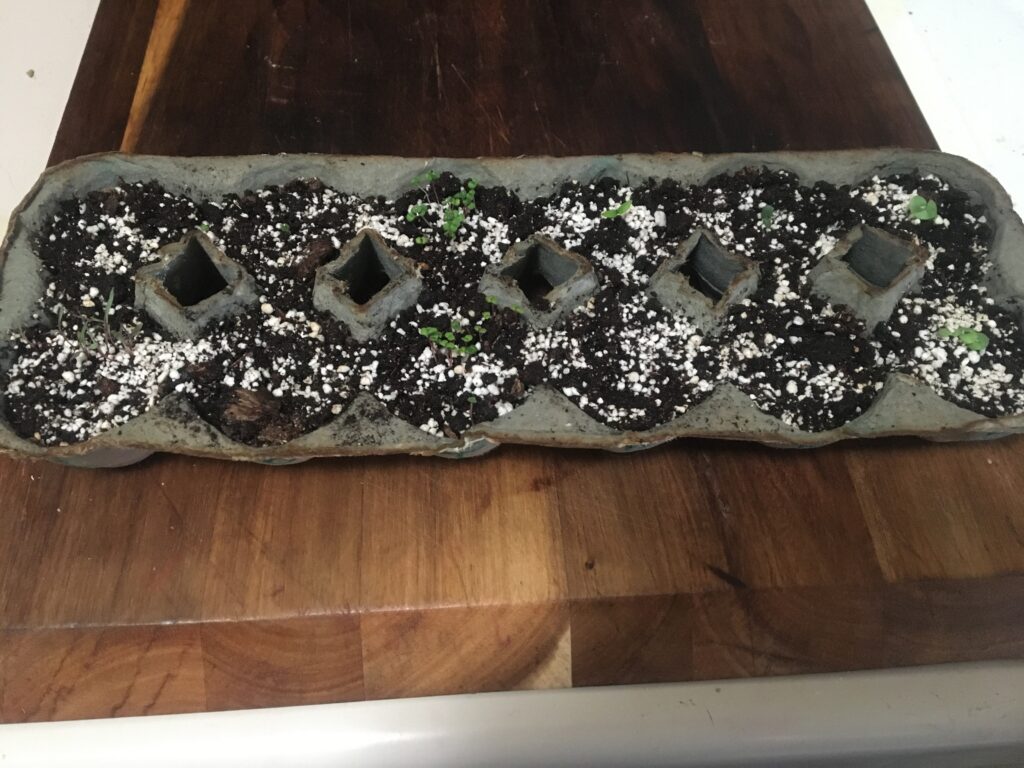
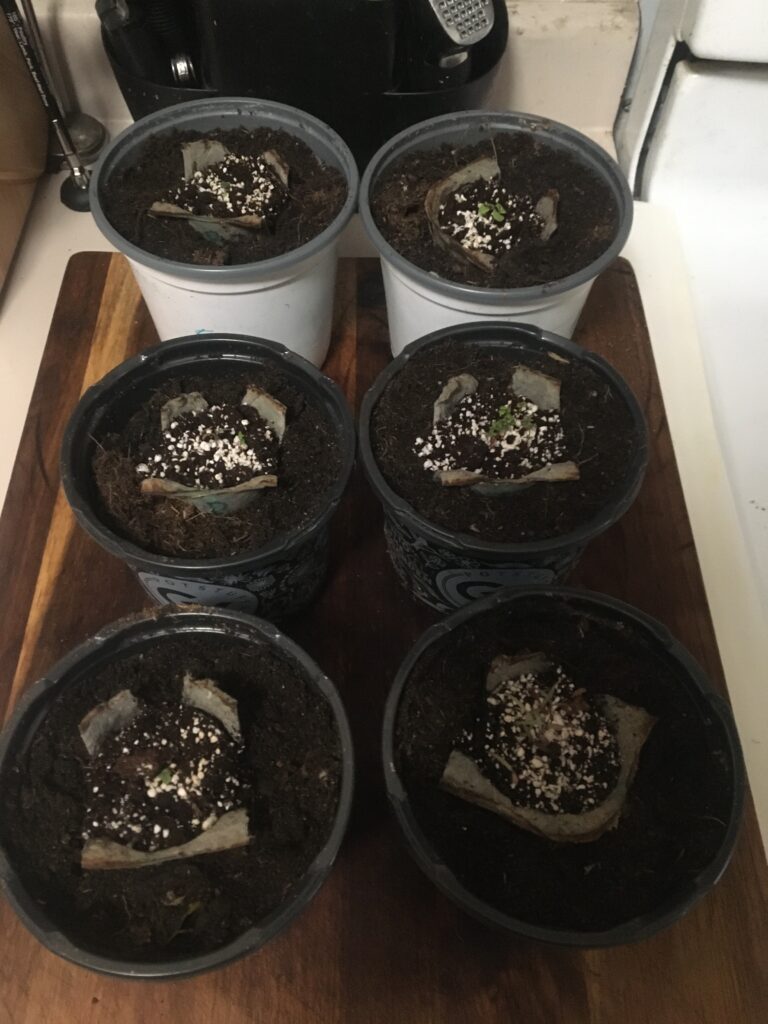
Now back under the light you go! The seedlings definitely don’t need containers this large yet, but it really helps with the watering. Having that much extra soil makes it so I can water every couple of days rather than every day which I needed to do in the egg carton.
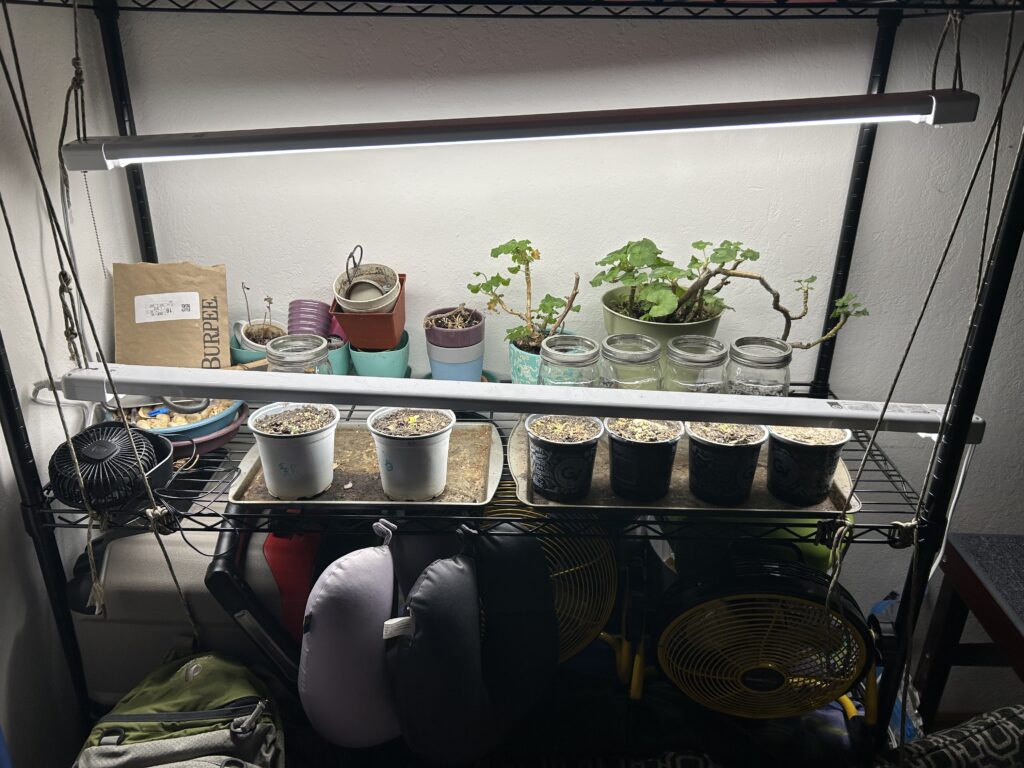
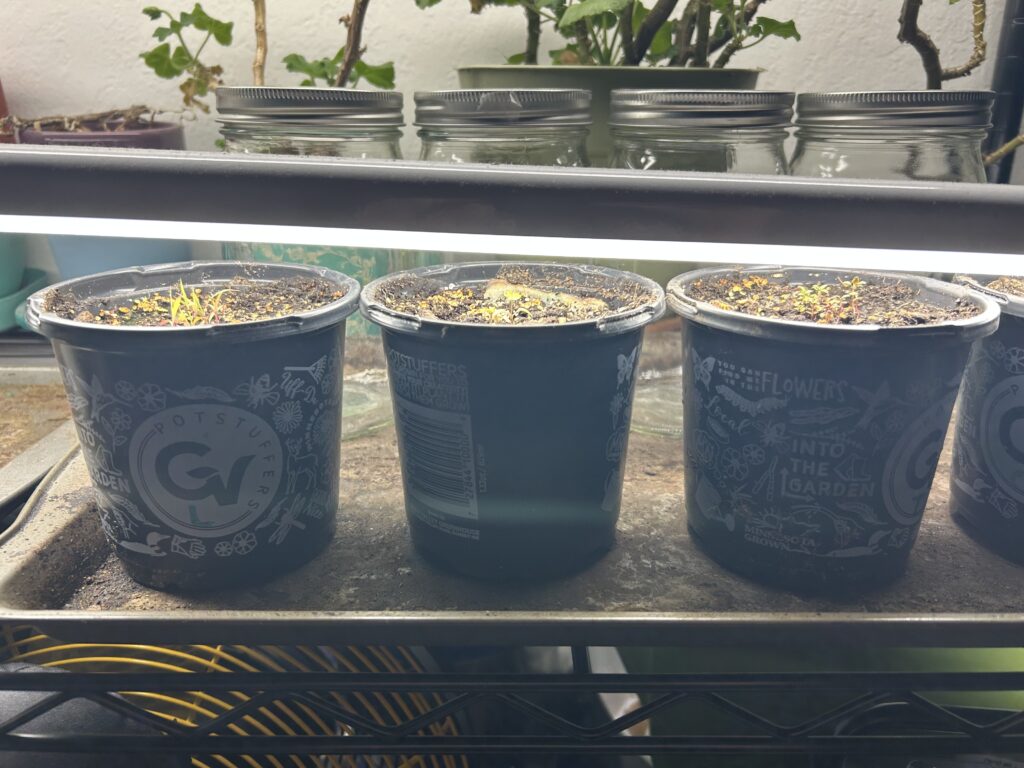
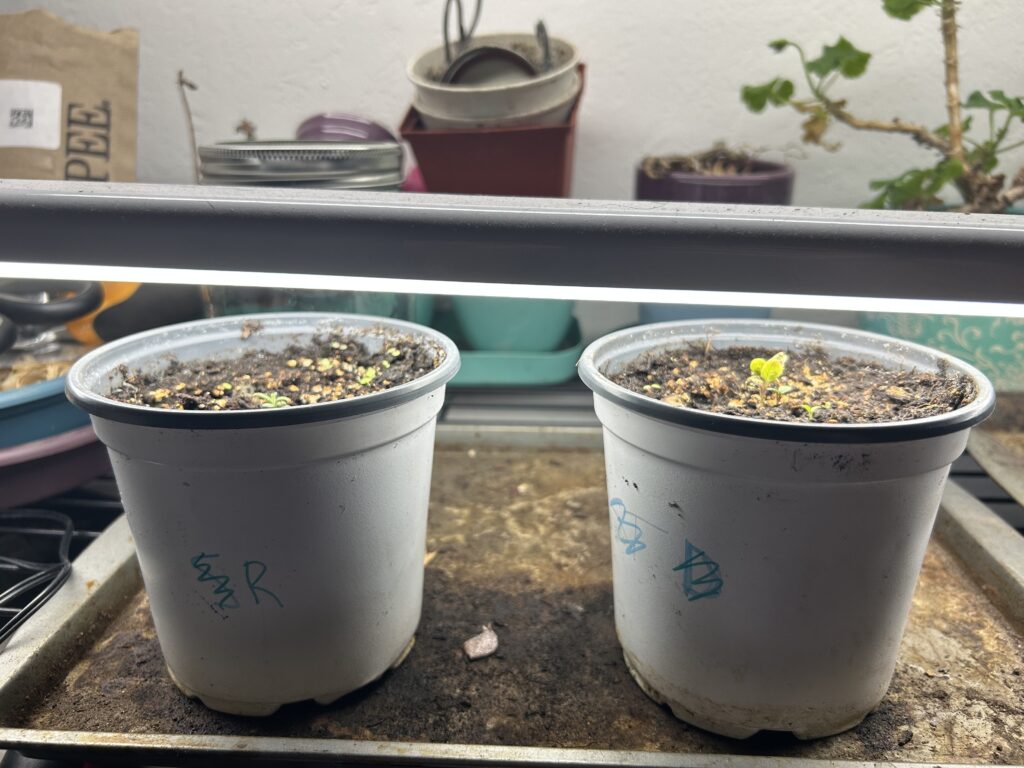
At this stage the seedlings will take a little time to get large enough that we can then transfer some cuttings to the water. It also doesn’t help that it is now winter time, so we keep our indoor temperature a little cooler. Either way we will eventually get there, and this is all for fun at this point anyways! You probably won’t see an update on this for a while, but check back in a couple of weeks to learn about a raised bed garden technique that I recently learned about and am super pumped for. Take care out there!
